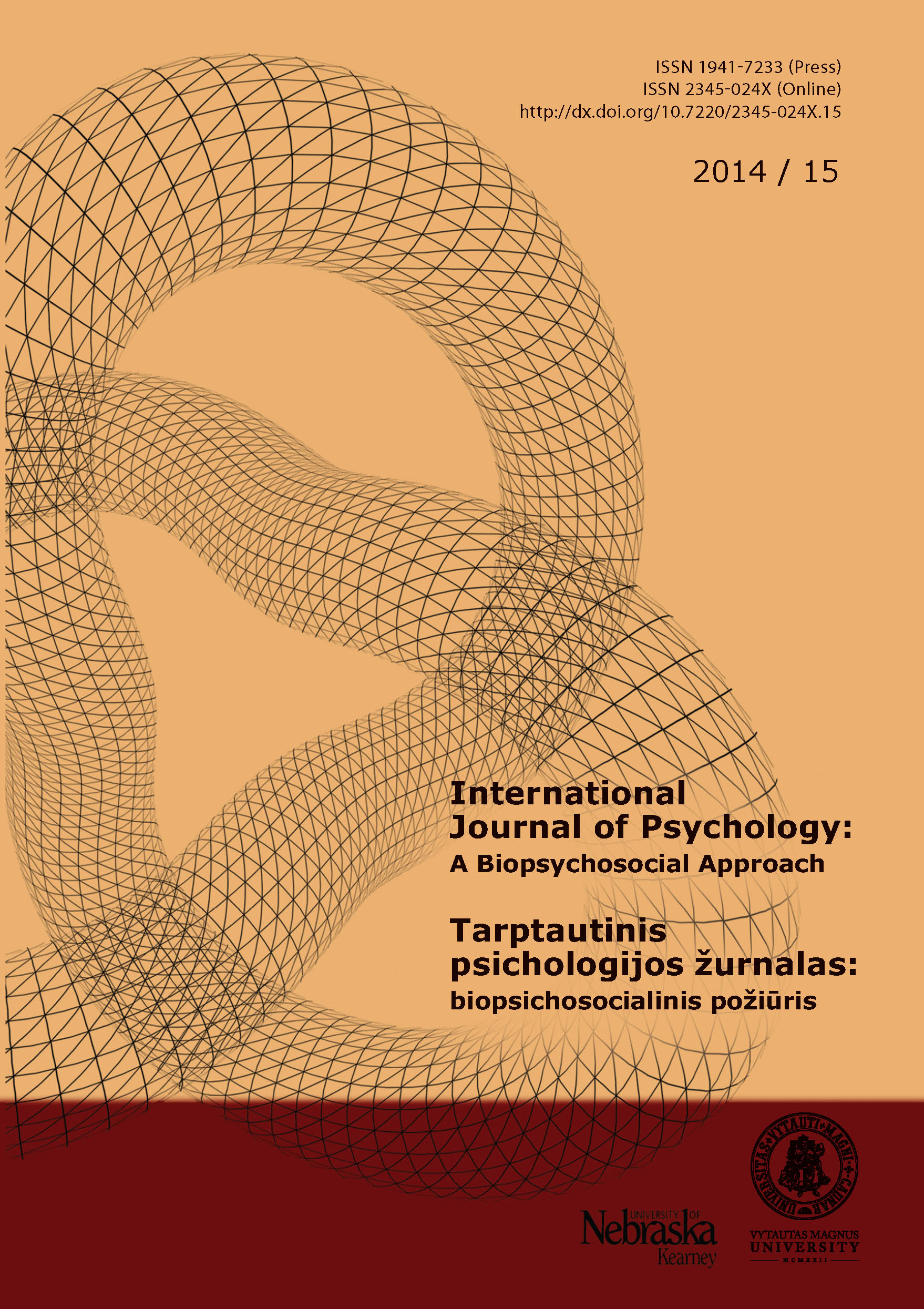Elgesio sunkumų turinčių paauglių mentalizacijos ypatumai
MENTALIZATION IN ADOLESCENTS WITH CONDUCT PROBLEMS
Author(s): Lina Gervinskaitė-Paulaitienė, Rasa BarkauskienėSubject(s): Social Sciences
Published by: Vytauto Didžiojo Universitetas
Keywords: Behavior explanations; Internal states identification; Emotion recognition; Conduct difficulties; Adolescence
Summary/Abstract: Mentalizacija – tai savo ir kitų žmonių elgesio supratimas atsižvel¬giant į jų vidines psichikos būsenas (Allen ir kt., 2008). Keliama prielaida, kad menta¬lizacijos sunkumai siejasi su psichopatologija. Pradedama domėtis elgesio problemų turinčių vaikų (Sharp, 2008; Ha ir kt., 2011) ir suaugusiųjų mentalizacijos ypatumais (Bateman, Fonagy, 2008), siekiant atskleisti galimas mentalizacijos sunkumų ir tarpas¬meninių problemų sąsajas, nustatyti pagrindinius elgesio sunkumų turinčių asmenų mentalizacijos ypatumus ir tuo remiantis pagrįstai organizuoti intervencijas. Vis dėlto tyrimų, atskleidžiančių, kokiais mentalizacijos ypatumais pasižymi paaugliai, turin¬tys elgesio sunkumų, trūksta. Šio darbo tikslas – atskleisti paauglių, turinčių elgesio sunkumų, mentalizacijos ypatumus. Metodai. Tyrime dalyvavo 40 socializacijos cent-ruose ugdomų paauglių ir 45 paaugliai, lankantys vidurines mokyklas. Remiantis auk-lėtojų ir tėvų pateikta informacija, taikant ASEBA grupės klausimynus (Achenbach ir Rescorla, 2001), atrinkti 36 paaugliai, pasižymintys elgesio sunkumais, ir 40 paauglių, neturinčių elgesio sunkumų. Norint suprasti, kokie mentalizacijos ypatumai būdingi paaugliams, turintiems elgesio sunkumų, specialiai šiam tyrimui sukurtas metodas – situacinės istorijos (SI), leidžiantis vertinti, kaip paaugliai aiškina kitų žmonių elgesį. Tyrime taip pat naudotas Minčių skaitymo iš akių testas (Baron-Cohen ir kt., 2001), vertinantis kito žmogaus vidinių būsenų atpažinimą iš akių srities. Rezultatai ir išva¬dos. Tyrimo rezultatai rodo, kad turinčių elgesio sunkumų paauglių į kitus žmones nukreipta mentalizacija yra prastesnė nei paauglių, neturinčių elgesio sunkumų. Aiš¬kindami kito žmogaus elgesį šie paaugliai prasčiau identifikuoja jo patiriamą emociją ir elgesio intenciją ir prasčiau atpažįsta vidines kito žmogaus būsenas. Kartu nustatyta, kad tie elgesio sunkumų turintys paaugliai, kurie geba tiksliau paaiškinti kito žmogaus elgesio priežastis, tiksliau atpažįsta ir kito žmogaus vidinę būseną.Mentalization refers to an individual‘s ability to understand their own and others’ behaviour in relation to mental states (Allen et al., 2008). Authors of mentalization theory raise the assumption that mentalization difficulties are related to different forms of psychopathology. In order to reveal probable relationships between mentalizing difficulties and interpersonal problems, researchers and practitioners are starting to analyse mentalization in children (Sharp, 2008, Ha et al., 2011) and adults (Bateman, Fonagy, 2008) with conduct difficulties. These studies are important in identifying main mentalization difficulties and in providing the basis for well-grounded interventions. Nevertheless, there are not enough studies exploring mentalization characteristics in adolescents with conduct problems. The aim of this study was to identify characteristics of mentalization in adolescents with conduct problems. Methods. 40 adolescents from children socialization centers’ and 45 adolescents from secondary schools participated in the study. Based on ASEBA TRF6/18 and CBCL6/18 scales scores 36 adolescents with conduct problems and 40 adolescents having no conduct problems were selected for main research. The method measuring how adolescents explain behavior of other people (mentalize), was designed for this study. The Eyes Test (Baron-Cohen et al., 2001) assessing participants’ ability to infer mental states from the eyes region was also used in the study. Results and conclusions. The results showed that mentalization in relation to others was worse in adolescents with conduct problems. These adolescents showed inferior ability to identify emotions and intentions in another person when they were asked to give explanations for another persons’ behavior. Their ability to infer correct mental states from the eyes’ region was worse as well. The results showed that adolescents, who were able to explain another person’s behavior more accurately, were able to infer more correct mental states from the eyes’ region.
Journal: Tarptautinis psichologijos žurnalas: biopsichosocialinis požiūris
- Issue Year: 2014
- Issue No: 15
- Page Range: 47-68
- Page Count: 22
- Language: Lithuanian

